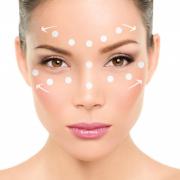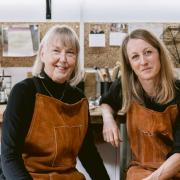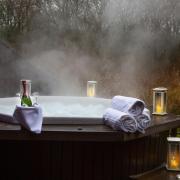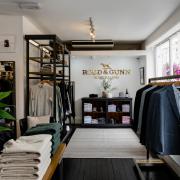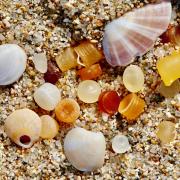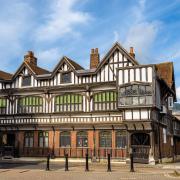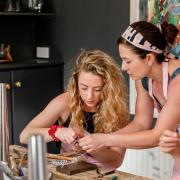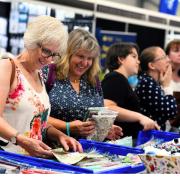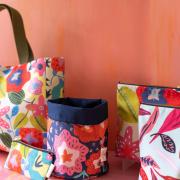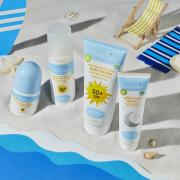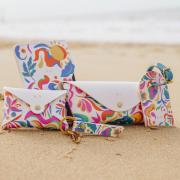From alpaca to apparel - the warmth and luxury of animal fibre is weaved into every stitch of the luxury, sustainable accessories range created by Brockenhurst's Claire Turner and her beloved herd
Jenny and Nina are not the most talkative of interviewees. And neither are Noodle and Bing Bong. But they are very inquisitive, with beautiful faces – and an abundance of super soft fleece.
The alpacas I meet in the fields behind Claire Turner's Brockenhurst home are just some of the 25-strong Grey Market Alpacas herd she has created over the last few years.

When they moved into the property in May 2020, Claire began looking for a suitable use of the land. Her research into alpacas found them to be the perfect inhabitants.
'We did all that and thought "now we have to put something on it",' she says. 'We had already started talking about what we were going to do. I started looking around at alpacas, researching it all. The seed was already sewn. Alpacas regenerate the land and they don't push against fences. They've got a very light footprint as well.

But when it was time for the animals to be shorn, the drive to be entirely sustainable sparked a business idea for fashion savvy Claire, who has modelled for 30 years,
Having started her herd with nine of the fine, 'puffy' fleeced Huacaya breed of alpaca, the gang quickly grew when Claire fell in love with the heavier coats of the Suri species while doing online courses and research into the animals during lockdown.
'When we did the shearing and all the fleece came off, I was absolutely amazed, I couldn't believe how much there was,' she says, adding that she had just sent off some 100 kilograms of fleece to be turned into yarn (a combination from her own animals and fleeces from the farms of friends in the local area).

'I thought "I have to do something with it".'
While the fleece is compostable, so would help regenerate the land if buried, Claire was adamant it shouldn't be thrown away, and set about coming up with some fine knit designs for wraps, cardigans, jumpers, hats and scarves, launching her first Herd Alpaca Apparel collection in November last year.

'I do the design, design everything for one size. Having a background in modelling, I know how clothes should fit and hang. I want it to flatter all body shapes.'
Keen to keep everything as natural as possible, Claire doesn't dye the fleeces, preferring to create garments in the animals' own colours, sometimes mixing the fleeces to produce new shades.

'The younger fleece is much finer. We've got one, Nina, that's 19. We didn't shear her this year – as they get older it gets much coarser. She will just live out her days here.'
However even some of the coarser fleeces are put good use, making rugs and throws, in keeping with Claire's sustainable ethos.

'Because it's micro production, lots of the mills don't want to do it, they want to be making 500.'
The fleeces return from the mill – which was initially based in Wimborne, just across the border in Dorset, but has now relocated to Northern Ireland – as a fine yarn. Claire will then take a selection of designs to the manufacturer in Leicester, where they are transferred via a computer programme to a machine that produces the garments.
Then the clothing is worn, washed and steamed to test its durability before it can be sold.

'Sometimes it works straight away, which is fantastic. I'm hoping now to get some different variations on a theme. I don't want to start using Lycra, I want it to be completely natural so that does present challenges. Everything has got to be fine knit. It's exciting. I'm excited to see what clothes we are going to get.
'It's all odour resistant as well, because it's all natural. The hats are frizz free Everything is light and it's temperature regulating.'

'Its very early days,' says Claire, who has undertaken business and marketing courses at nearby Brockenhurst College to broaden her knowledge.
'I'm going to do some makers' markets with the hats and scarves in the run up to Christmas. I'm a member of the New Forest Marque as well so they've got some shows coming up. I'm getting some local support as well. People walk past and they see the animals, so they can join the dots.'
With the help of full-time alpaca handler Peter, Claire has also set up a separate breeding programme with the animals.

'People have been buying into the story,' she smiles. 'Nothing goes to waste, even their poo gets used as compost – it all breaks down and regenerates the land. Everything is just really circular.
'It's really trying to explain this is a whole process, it's not just a jumper.
'My passion is the fact that it's from alpaca to apparel, because it's literally that journey.'
herdalpacaapparel.co.uk




